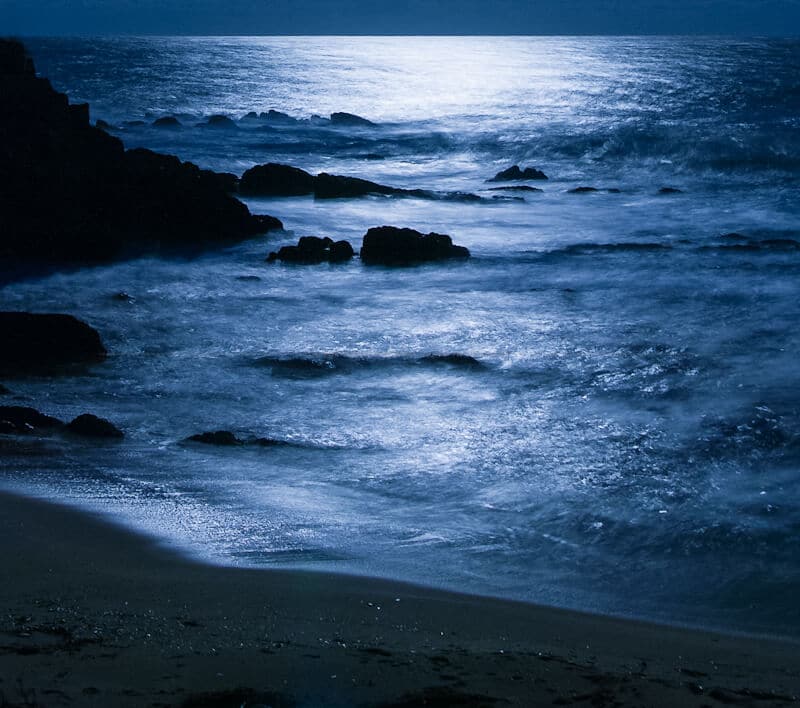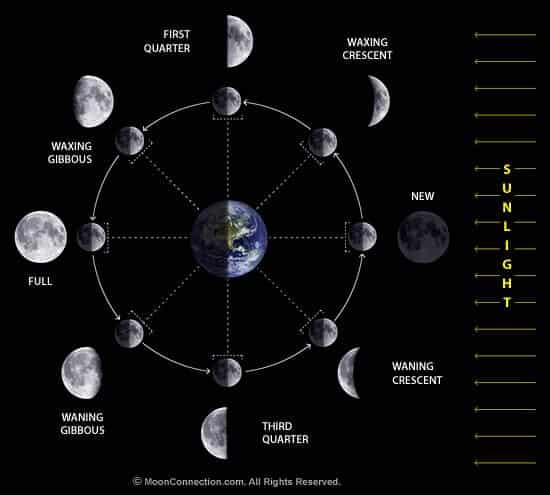a full moon always rises at sunset

moon rises full across a sparkling sea the sun cedes the sky
You want to know something that absolutely fascinates me? Of course you do! You'll need to think about this a bit so let's go ... 'a full moon always rises at sunset' ... think about that for a moment. Have you ever seen the full moon rise at any time other than sunset? You know, like in the middle of the night or in the morning? The answer will be no because it doesn't happen. OK, so far, so good. Now hold that thought and add to the fact that the lunar cycle is fixed ... well OK, let's say regular at 29 and a half days (29.53059 days to be precise). So every 29 and a half days there's another full moon. OK? Now the next bit gets confusing but stay with me and let's quickly recap;
- full moon always at sunset
- full moon occurs every 29.5 days
Alrighty, there's another cycle working here too, the seasons. Every day the days get longer or shorter depending on the season you're in and by 'day' I'm referring to the amount of daylight. So, here in SE Australia the days are growing longer as we march toward Spring. There's a full moon this Thursday (2nd August) and it will rise at sunset even though the day has lengthened. What balance!
There's lots more moonphase related stuff over at Moonconnection.com which is where I lifted the diagram below;
]
Courtesy Moonphases.com
Think about it next time you see a full moon rising ... just remember 'a full moon always rises at sunset'.
I'm the type of person who follows the moon and the seasons ... I know where the moon will be (roughly!) at any given time of the day or night depending on where the lunar cycle's up to.
Do you follow the moon? Do you use the sun to tell you which direction you're facing? Do you live above the arctic circle? You can tell me what happens there! Do tell. I'm interested.
12 Minutes with a Super Moon
I am always struck by the saturation quality of moonlight. The colours have a rich and understated vibrancy.
This is a small bay on the far south coast of New South Wales captured using only the light of the moon ... the Super Moon of 6th may 2012 to be exact. The exposure time is 12 minutes @f/9 and you can see there was plenty of light ... and colour! Our eyes simply don't see the colours of moonlight ... they're physically incapable of doing so. In fact seeing by moonlight is perhaps the closest we will ever come to naturally viewing a scene in monochrome. (In brief, it's to do with the rods and cones that lie in our retinas and something I will do a separate post about.) It was close to midnight and although the surf was pounding in on a king tide (presumably to do with the perigee of the moon) with waves reaching to a couple of meters from the tripod ... the long exposure has effectively smoothed everything out.
About the 'Super Moon'
The Moon’s distance from the Earth is not always the same due to the elliptical shape of the orbit and variations in the gravitational attraction between the Moon, Earth and Sun. When a full moon occurs close to the perigee of the Moon (the point of its closest approach to the Earth) we observe a “super moon” phenomenon.There are anywhere from 4 to 6 super moons every year, not all appear as intense or last as long in their 'super' effect. The perigee of the Moon on the 6th of May was the most powerful in years and caused many discussions in scientific circles. There was even a claim circulating that a Super Moon contributed to the 'sinking of Titanic' (wtf!) occurring as it did 100 years after the sinking in April 1912 ... my mind boggles when I reflect that some people believe this!
What about you? Did you see the Super Moon? Did you watch the moonrise or do anything special other than perhaps go outside and look and think 'hey, it does look a little bigger'?


